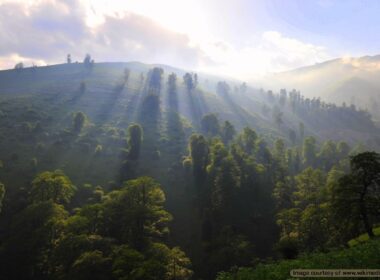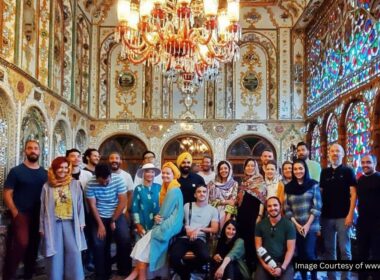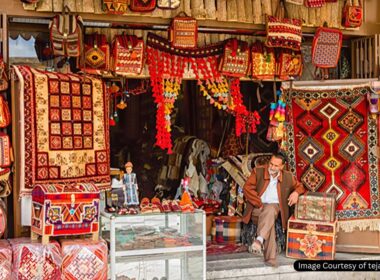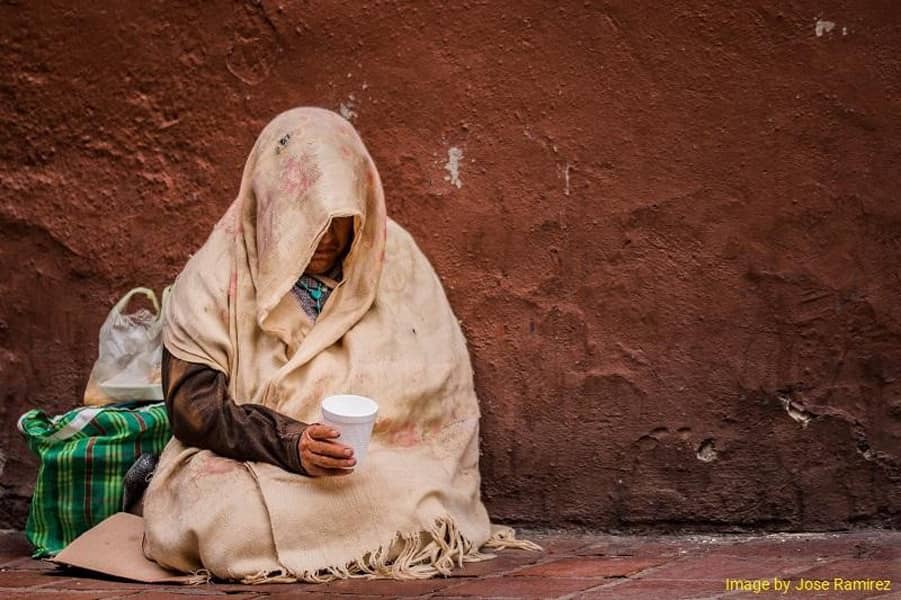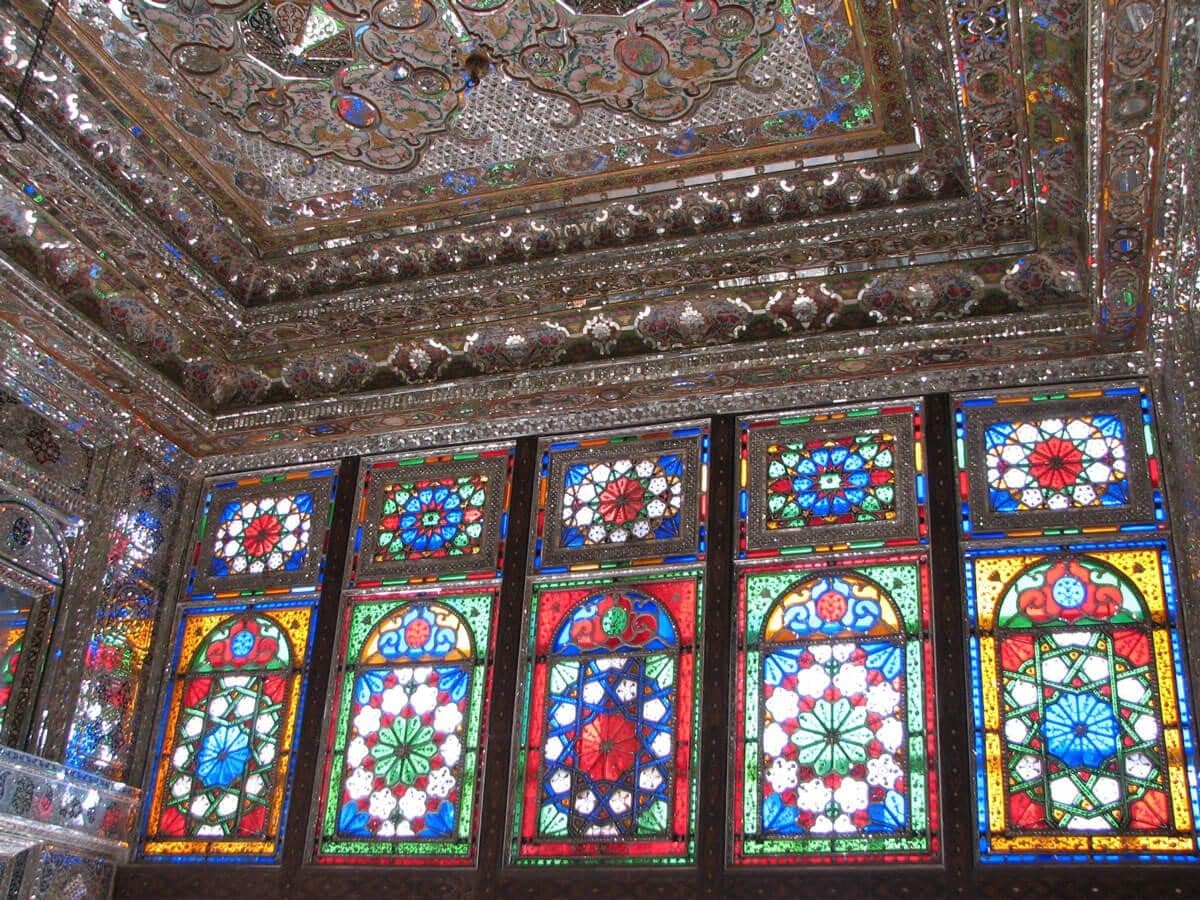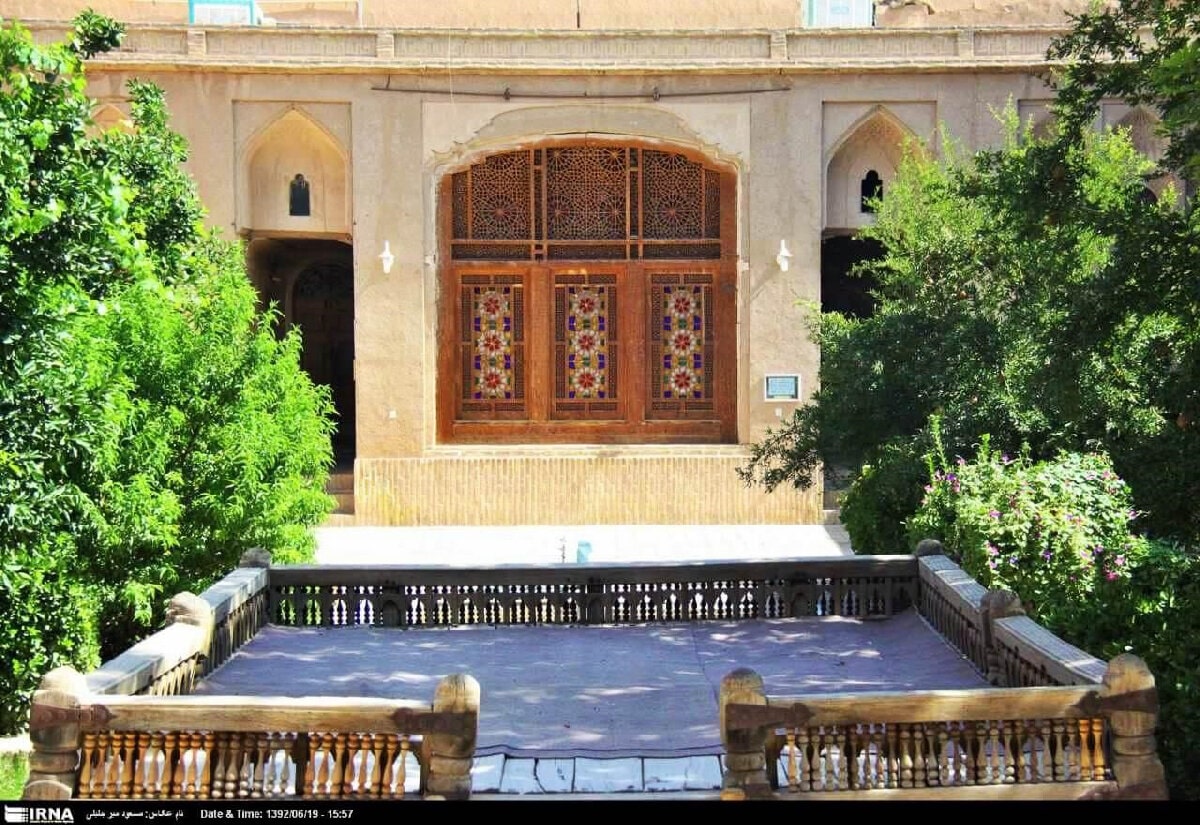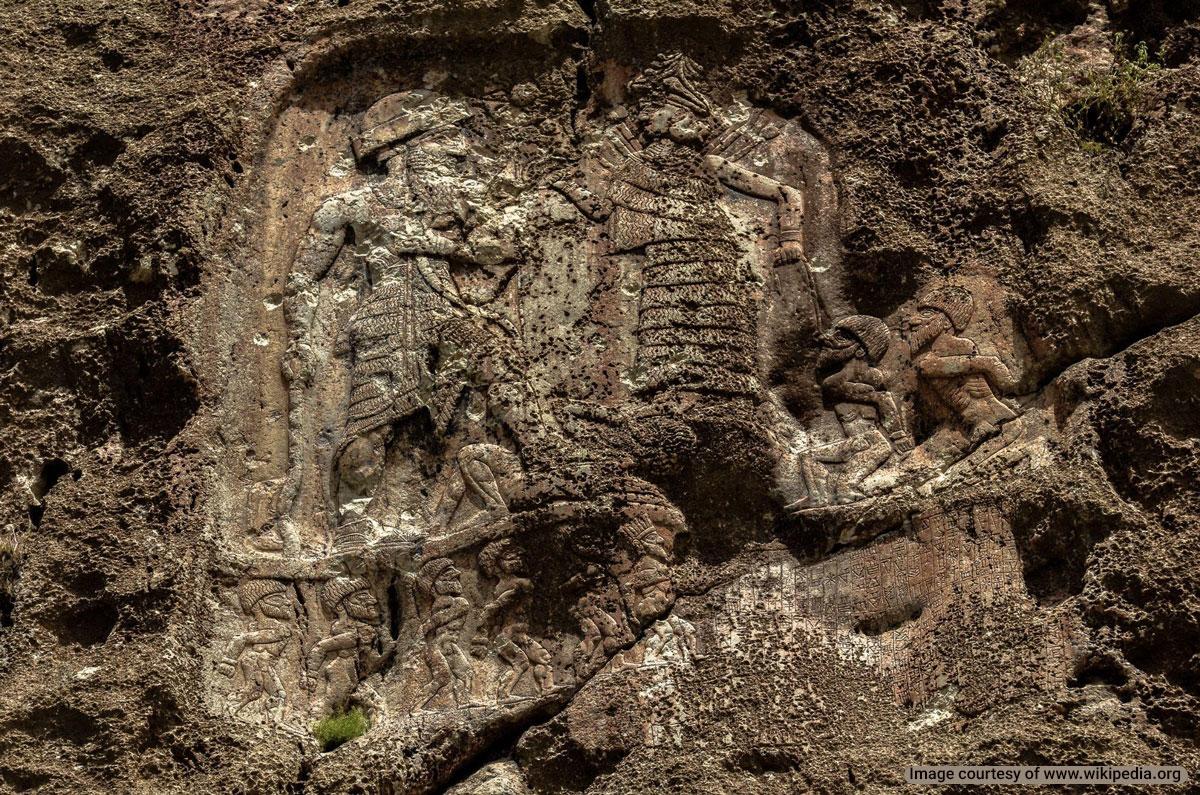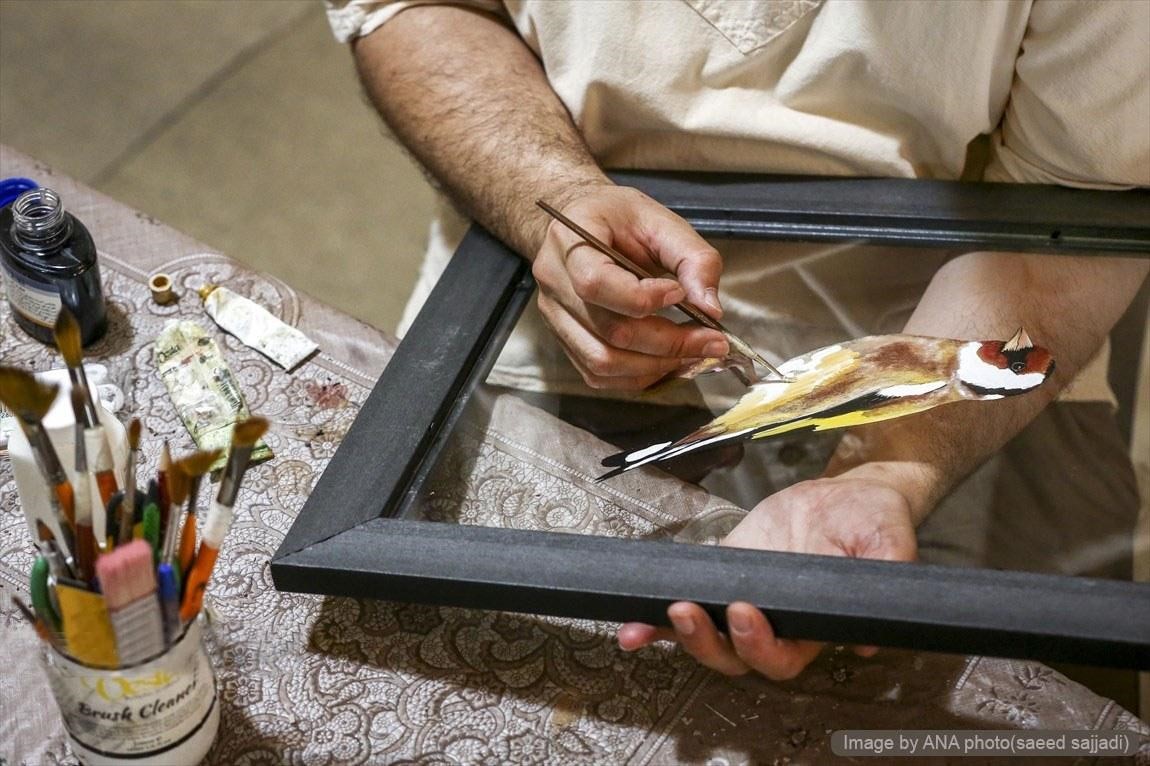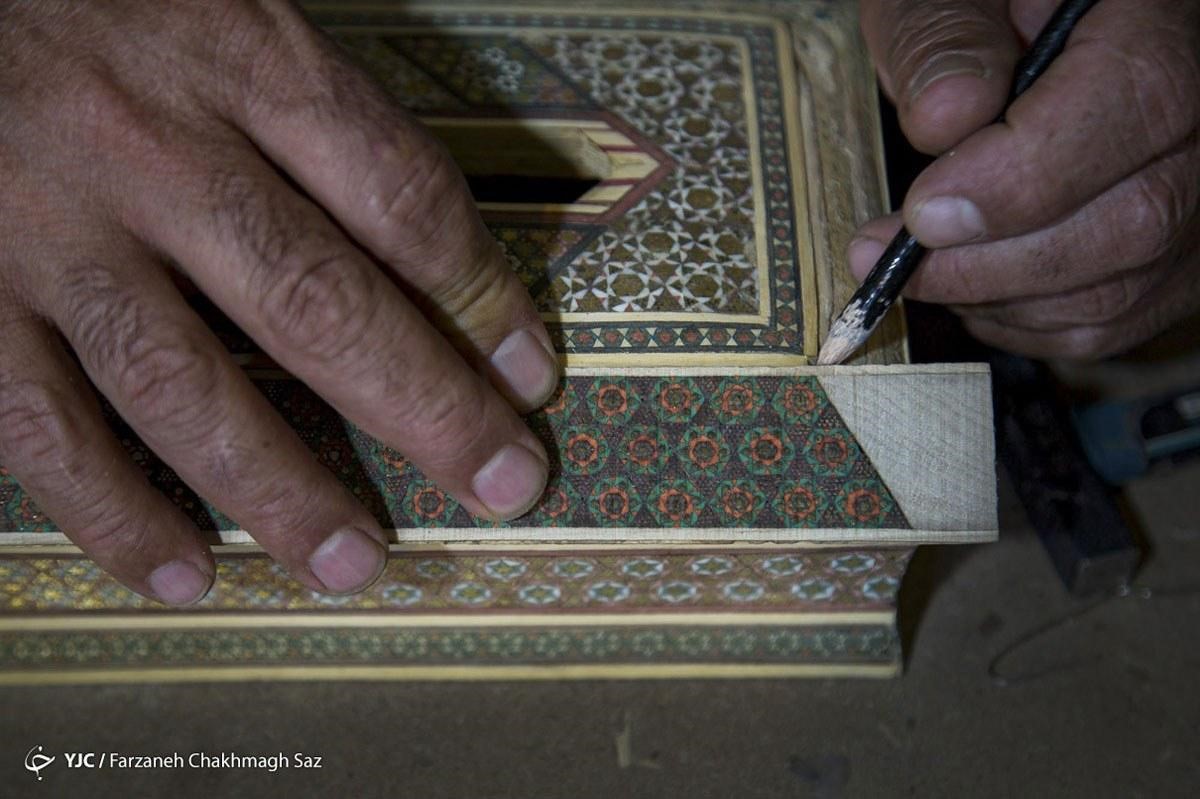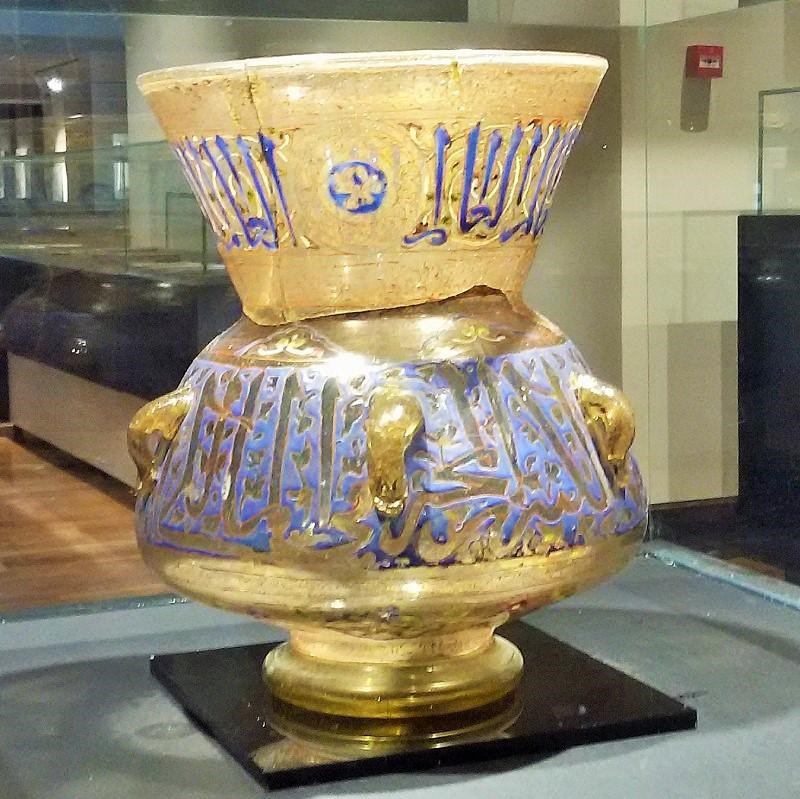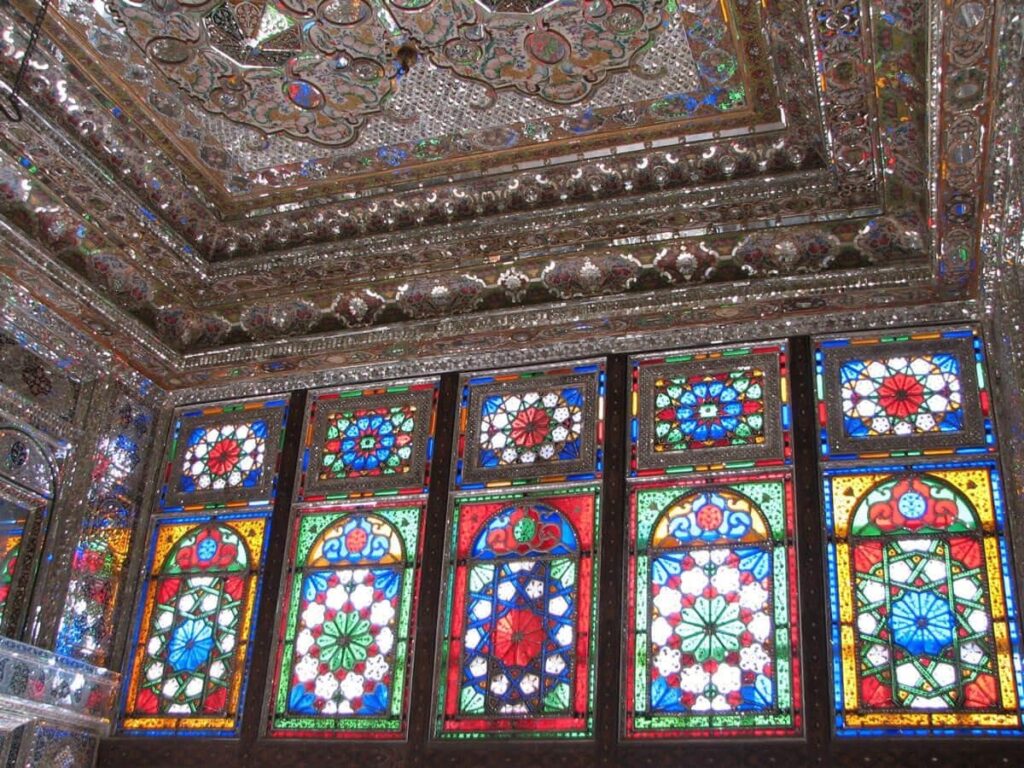
Orosi-Sazi art is considered one of the most famous Iranian wooden handicrafts. It combines wood inlay, glass cutting, carpentry, and design. In the past, Iranian artists made beautiful Orosi (sash) doors and windows using this handicraft art, which opened and closed vertically. Orosi doors and windows cover the entire wall and are integrated from the ceiling to the floor.
These Orosi constructs were usually installed between the room and the porch or between two halls, to be opened and closed when necessary. In this article, we will introduce Orosi-Sazi art, one of the traditional Iranian handicrafts.
History of Orosi-Sazi Art in Iran
Based on available evidence, Orosi-Sazi in Iran dates back to the Safavid period. In the Qajar period, the Orosi designs went through structural changes.
During the Safavid period, artists made beautiful Orosi doors with imported colored glass. At that time, sash doors were used only in the mansions of nobility, dignitaries, and rulers.
Many historical monuments in Iran are examples of using Orosi doors and windows. Some of these buildings are:
- Arg of Karim Khan, Mohtsham House in Shiraz, Divan Khanah Building, Dowlat Abad Garden, Chehel Sotoun Palace, Golestan Palace, Shams Ol-Emareh and…
Orosi Structure in Orosi-Sazi Art
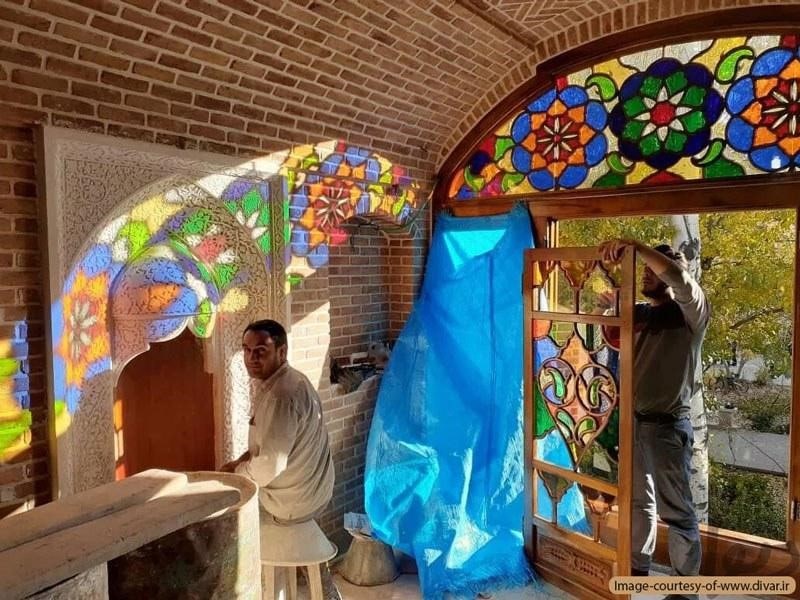
Each Orosi structure consists of the following parts:
Frame
It consists of straight and arched wood panels in vertical and horizontal forms that hold other components of the Orosi in place.
Bahoo, Vadar (Mullion)
Bahoo refers to the vertical and wooden shafts in the center of the framework. In other words, this part of the Orosi is the vertical wooden columns used to divide the door and window into equal parts.
Roo-Koob (Jamb)
Roo-Koob are thin sticks attached to the mullion’s two sides using iron studs. The thickness of the mullions also varies following the mullion and door leaf size. Mullion creates a rail-like groove to facilitate vertical movement of the sashes between these grooves. The Orosi compartments are moved up and down by the mullions.
Patagh (Casement)
This part of the door or window, which is also known as “Parhun ”, “Semi-circle” and “Se Pahloo” (Three Cornered), is considered the main part of the Orosi. The Patagh refers to the upper part of the Orosi that is fixed, connected to the framework, and used as a shade.
According to the type of building and the size of the door and windows, the Patagh are made in flat, lancet, and arched shapes; Then they are decorated with colored glass, Girih style, and traditional geometric patterns.
Kolah (Transom)
A horizontal beam that separates the fixed Patagh and the movable part (the casement).
Tonok (Muntin)
A small wooden framework holding glass panes inside the window or door frame.
Chefteh Rizeh (Sash Lock)
It is the latch holding the casement inside muntins and can be adjusted.
Pakhor (Sill)
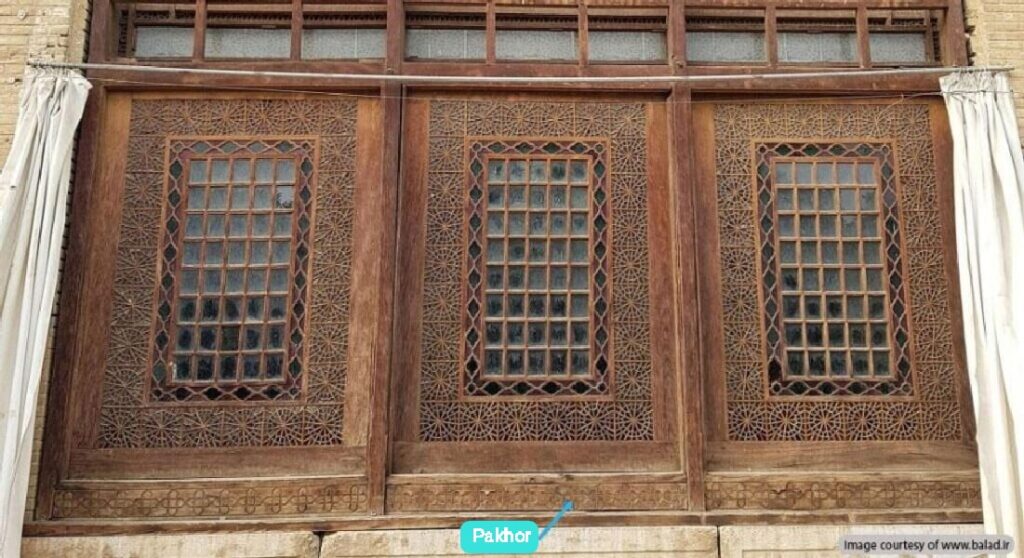
The lower and horizontal part of the frame is attached to the ground. The height of the sill varies between 10 and 15 cm, according to the width of the Orosi frame and casement.
Sashes
The sashes make up the lower part of the Orosi, are usually rectangular, and move up and down along the vertical axis. Some sashes with large muntins or decorative colored glass can capture more light, offer a better view of the outside scenery, and ventilate the room.
Additionally, door and window sashes, known as “leafs” are usually made individually. Sashes may have one leaf, three, five, seven, or nine leaves. Single-leaf sashes are often installed in the corridors of the first floor of the building.
Vagir (Tessellation)
Repetition of a pattern on a wide scale using various styles of symmetry is called tessellation.
Orosi Colored Glass
These glasses are available in azure blue, red, green, yellow, and orange. In the past, Iranian artists created hand-made Orosi glasses using glass paste.
What are the Principles of Iranian Orosi-Sazi Art?
Using nails and glue in the art of authentic sashing is not customary. Therefore, the different parts of the Orosi are adjoined with delicate wooden joints called Tongue and groove. Another technique called “Koneshkaf (rebated joint)” is popular in this art, in which the colored glass is placed inside the grooves of the door and window frames.
In Orosi-Sazi art traditionally involves the following steps:
- The initial Orosi design, using the science of geometry and trigonometry, fitting to the dimensions of the desired space, is drawn on paper.
- The desired wood and glass are cut with special precision and elegance and are put together with unique skills.
- In the last stage, woodworking techniques connect all the parts.
Muntin Patterns in Orosi-Sazi Art
In Orosi-Sazi art, Tonok or muntins (wooden panels separating the glass panes) have different patterns. Some of these patterns are as follows:
- Arabesque pattern: This pattern is inspired by nature and is widely used in weaving and textile handicrafts.
- Girih pattern: It is a geometric pattern inspired by celestial bodies, the universe, plants, and animals.
- Jegheh (Paisley) pattern: Botteh Jegheh (Paisley) design stems from the “cypress tree”, which is a symbol of freedom in Iranian culture.
- Combined Patterns: In some Orosi-Sazi artwork, several or all common patterns are combined to create a fusion of art styles.
- Four-leaf pattern: This pattern was inspired by the clover, a symbol of luck and prosperity.
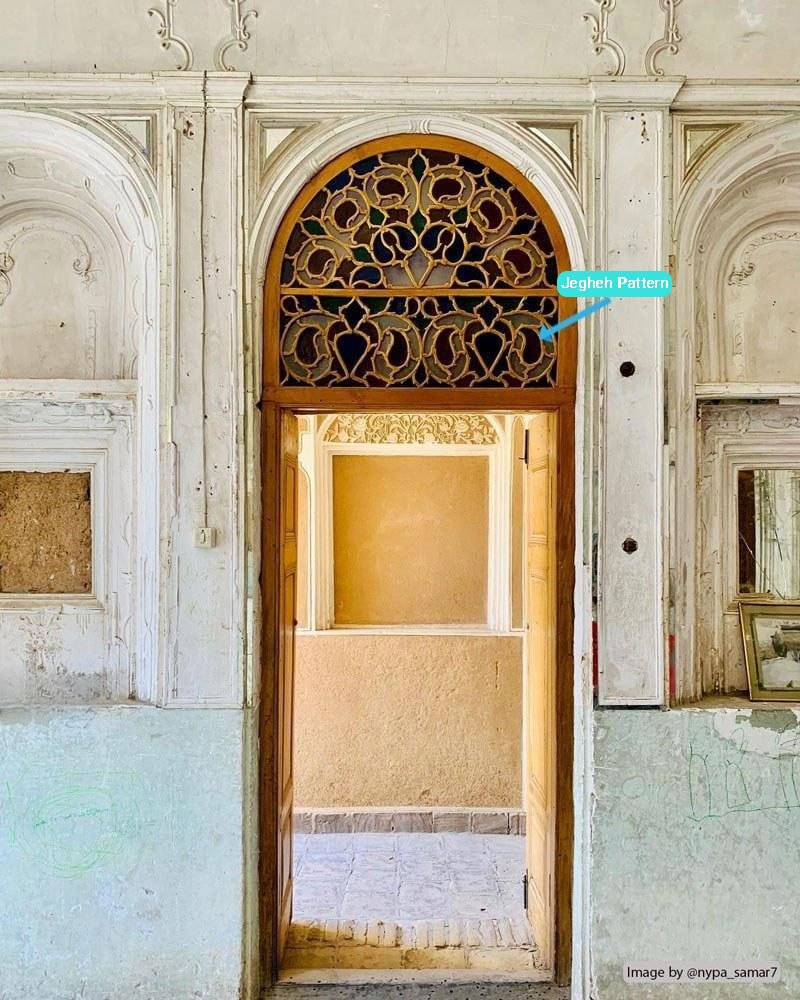
Orosi-Sazi Art, an Iranian Intangible Cultural Heritage
Orosi-Sazi art is one of the branches of traditional handicrafts in Iran, classified as intangible cultural heritage in tourist attractions. The artists of this field use these handicrafts to decorate wooden items. Destination Iran recommends paying more attention to Orosi handicrafts and structures on tours of Iranian historical monuments.


